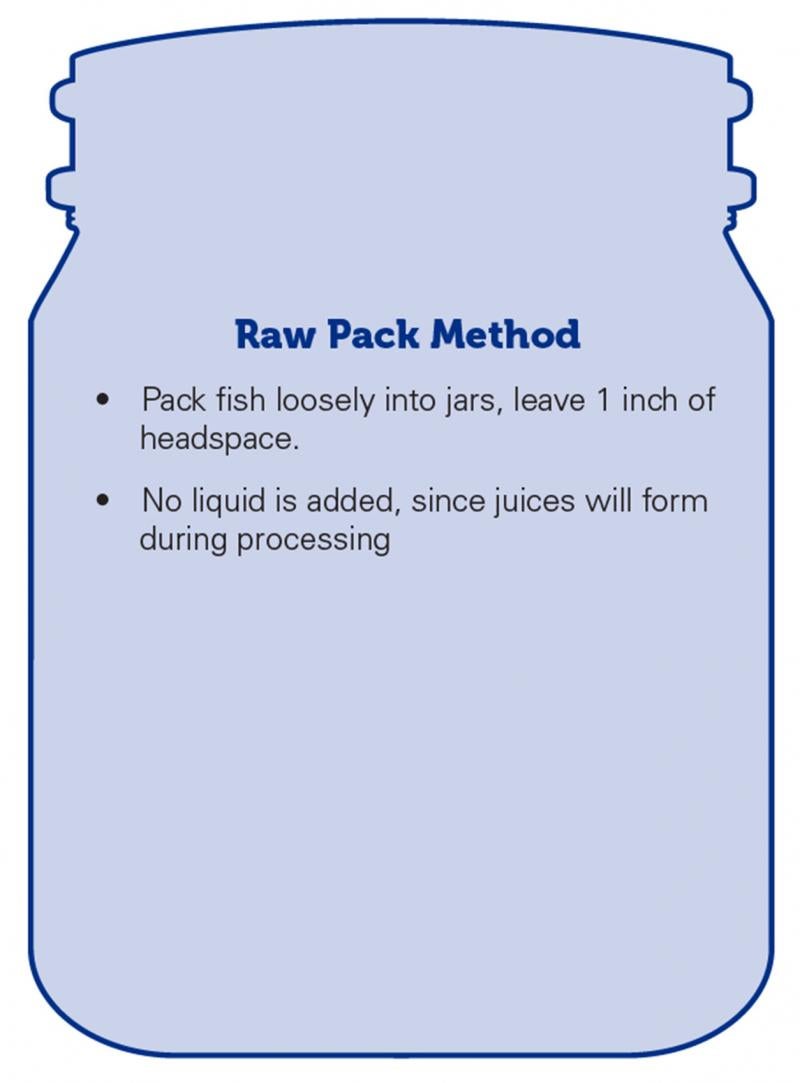Written collaboratively by Hope Kleine, former SDSU Extension Health Education Field Specialist, and Jake Elfmann.
Canning is a great method to preserve and extend shelf life for many types of foods, including fish and seafood products. Using safe preparation and storage practices allows for anyone to store nutritious, high-quality protein. It is important to practice safe food handling, storage, and preparation techniques because contaminated food will not be safe to eat following canning.
Preparation and Storage

Cut fish into strips, chunks, or pieces that are suitably sized for pint or quart jars. Leave approximately 1 inch of headspace at the top of the jar. Finally, add a label and date to your storage container and then store in a cool, dark, dry place. Canned meat is best consumed within 18 months after processing.
Fish and shellfish can be significant sources of food poisoning bacteria such as Clostridium Botulinum and require longer processing time in a pressure canner than do other foods at home. Freshwater fish suitable for canning include: Catfish, Northern Pike, Salmon, Smelt and Trout. Panfish such as crappies, perch and bass, walleye and other pike are much better preserved by freezing.
When Canning Fish:
- Remove internal organs and skin fish.
- For large fish, remove bones and fat from skinned fillets. Cut into pieces that will fit in canning jars. Small fish may be canned whole, minus heads and tails.
- Keep cleaned fish on ice or refrigerated until ready to can. Store at 40° F or colder no longer than two days until canning.
- Fatty fish such as catfish, northern pike, smelt, salmon and trout are to be loosely packed raw with no added liquid.
Pressure Canning
When canning fish, it is important to use the right equipment. Only a pressure canner will reach the high temperature needed to kill the harmful bacteria in fish. Water bath canning methods, used to store high-acid or acidified foods, will not reach the required temperature and is not suitable for canning fish.
| Type of meat |
|
|
|
|||
|---|---|---|---|---|---|---|
| Fish |
|
|
|
|||
| Fish |
|
|
Directions for quart jars are different than pint jars. Please reference The National Center for Home Food Preservation | |||
Adjusting for Altitude
Altitude can affect how much time is required when canning foods. Anyone canning at 1,000 feet above sea level or higher will need to make adjustments when processing foods in order to safely preserve food. The altitude of South Dakota ranges from 1,200 feet to more than 6,000 feet above sea level, so it is important to understand how your local altitude level will affect your canning process. View a topographic map of South Dakota to determine your local altitude. Refer to the information below for how to adjust for altitude when using a pressure canner with pint jars. Directions for quart jars are different, reference The National Center for Home Food Preservation.
Dial gauge canner pressure at:
- 0 – 2,000 feet: 11 pounds
- 2,001 – 4,000 feet: 12 pounds
- 4,001 – 6,000 feet: 13 pounds
- 6,001 – 8,000 feet: 14 pounds
Weighted canner gauge pressure at:
- 0 – 1,000 feet: 10 pounds
- 1,000 fee and above: 15 pounds
Additional Information
For further information on canning meats, visit the National Center for Home Food Preservation, the Wisconsin Safe Food Preservation Series, or the SDSU Extension Food Preservation page.

